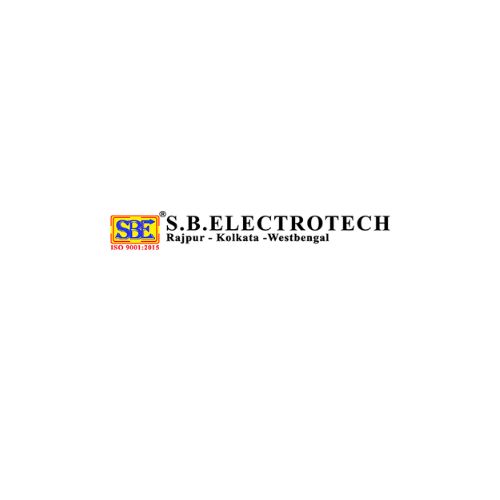Disposable sleeve covers are vital for maintaining hygiene and preventing contamination in various professional settings. Commonly utilized in sectors such as healthcare and food processing, these covers act as a protective barrier, safeguarding both the wearer and their surroundings. The increasing demand for safety measures has led businesses to focus on these covers to ensure operational efficiency and hygiene. By offering an additional layer of protection, Disposable sleeve-covers help mitigate the risk of contamination, making them indispensable in environments where cleanliness is paramount. Understanding the key aspects of these products is essential for industries aiming to uphold high standards of safety and cleanliness.
Materials Used
Disposable sleeve-covers utilize materials like polyethylene, polypropylene, and Tyvek, each offering unique benefits. Polyethylene is noted for its waterproof properties, making it ideal for wet environments. Polypropylene, on the other hand, is breathable and provides comfort during extended use. Tyvek is recognized for its durability and chemical resistance, making it suitable for demanding tasks. The material selected directly influences the sleeve cover’s effectiveness in various applications, from healthcare to food processing. This diversity allows businesses to choose a sleeve cover that best matches their operational needs, ensuring optimal protection and functionality in specific conditions.
Applications Across Industries
In healthcare, Disposable sleeve-covers are essential during surgical procedures, laboratory work, and patient care to maintain a sterile environment. These covers play a crucial role in preventing cross-contamination. The food processing industry helps ensure that food products remain uncontaminated, protecting both the food and the workers. Their application extends to various industrial settings where cleanliness and safety are priorities. These covers provide an effective barrier, reducing the risk of contamination in manufacturing processes. Additionally, they are used in cleaning and sanitation services to safeguard workers from exposure to hazardous materials. The versatility of Disposable sleeve-covers makes them suitable for diverse professional environments where hygiene is paramount.
Environmental Considerations
The growing use of Disposable sleeve-covers brings attention to waste management challenges. Traditional sleeve covers are designed for single use, contributing to significant waste. To address this, manufacturers are exploring more sustainable options, such as biodegradable materials that break down quickly after disposal. Additionally, some companies are introducing recycling initiatives to minimize the environmental footprint. While the focus remains on maintaining high hygiene standards, an ongoing effort is to balance this with eco-friendly practices. Choosing products made from recyclable or biodegradable materials can help reduce the ecological impact, making prioritising both safety and sustainability possible.
Challenges and Limitations of Disposable Sleeve Covers
While disposable sleeve covers offer many advantages, they come with specific challenges. One primary concern is the reduced durability compared to reusable alternatives, potentially leading to increased waste and higher costs over time. Additionally, the continuous need to restock disposable covers can burden businesses financially. Environmental considerations also come into play, as the single-use nature of these covers contributes to waste management issues. Despite ongoing efforts to develop more sustainable options, balancing hygiene standards with environmental impact remains complex. Finally, ensuring proper disposal and adherence to waste management regulations can add another layer of complexity for businesses aiming to maintain safety and environmental responsibility.
Comparing Disposable and Reusable Options
When assessing sleeve covers, weighing the pros and cons of disposable versus reusable options is essential. Disposable covers provide easy use and instant hygiene assurance, ideal for environments requiring stringent cleanliness. However, they contribute to waste and ongoing costs. Reusable covers, while necessitating thorough cleaning protocols, can be more economical over time and produce less waste. The choice often hinges on industry needs and environmental priorities. Reusable options demand investment in cleaning facilities and adherence to rigorous sanitation standards, whereas disposable covers eliminate the need for such processes but raise sustainability concerns. Each option has its unique benefits and limitations.
Innovations in Design
Enhanced Comfort and Practicality:
Recent developments in the design of disposable sleeve protectors have focused on enhancing both comfort and practicality. Advanced materials provide superior ventilation, allowing for prolonged use without causing irritation or overheating. Improved flexibility ensures these covers do not obstruct movement, essential for activities requiring precise hand control.
Improved Fit:
The fit has been carefully adjusted to eliminate gaps, providing a more effective barrier against pollutants.
Cutting-Edge Technologies:
Designers are integrating technologies like sensors that track usage duration and notify wearers when it’s time to replace them, increasing safety and effectiveness.
Environmental Considerations
Sustainability:
There is an emphasis on making these protectors more environmentally friendly by exploring biodegradable materials, aligning with growing sustainability trends.
Antimicrobial Properties
Health and Safety:
These protective covers may incorporate antimicrobial properties to safeguard against harmful bacteria and viruses.
Enhanced Durability
Rigorous Conditions:
Enhanced durability ensures that the covers can withstand more rigorous conditions without compromising their protective qualities.
Regulations and Standards
The production and utilization of Disposable sleeve-covers must comply with stringent regulations and standards to meet safety and quality benchmarks. In healthcare, for instance, these covers must adhere to guidelines set by entities such as the NHS and the European Union’s Medical Device Regulation (MDR). Similarly, the food processing industry follows standards outlined by agencies like the Food Standards Agency (FSA) to prevent contamination and ensure consumer safety. Manufacturers must conduct rigorous testing to certify that their products meet these regulatory requirements. This includes assessing the materials’ durability, chemical resistance, and overall protective efficacy. Also, proper labelling is essential to inform users about usage, disposal, and compliance. Adherence to these standards safeguards workers and reinforces trust and credibility for the businesses that utilize them.
Choosing the Right Sleeve Cover
Choosing the right sleeve cover involves evaluating multiple factors to ensure optimal protection and cost-effectiveness. The primary consideration should be the material directly influencing the cover’s performance. Polyethylene offers waterproof properties, ideal for wet conditions, while polypropylene provides breathability for extended use. Tyvek is suitable for tasks requiring high durability and chemical resistance. Additionally, consider the level of protection needed for your specific industry, whether it’s healthcare, food processing, or industrial settings.
Cost is another crucial factor; weigh the expenses of disposable versus reusable covers to determine long-term viability. Consult with suppliers to compare options and ensure the chosen sleeve meets regulatory standards and application-specific needs. Proper selection can enhance operational efficiency while maintaining stringent hygiene standards.
Tips for Proper Use and Disposal
Adhering to correct usage and disposal practices is essential to ensure Disposable sleeve-covers function effectively. First, inspect the sleeve covers for any defects before use. When putting them on, ensure they fit snugly over your arms and secure any fastenings to eliminate gaps. Always follow your workplace’s protocol for replacing the covers, particularly if they become damaged or heavily soiled. For disposal, place used sleeve covers in designated waste bins, ideally those marked for medical or hazardous waste if applicable. Where recycling options exist, segregate the covers accordingly to minimize environmental impact. Always adhere to local waste management regulations and encourage colleagues to do the same, fostering a workplace safety and environmental responsibility culture.
Conclusion
Disposable sleeve covers have proven indispensable in ensuring hygiene and safety in various professional environments. Their widespread application in healthcare, food processing, and industrial settings underscores their importance in preventing contamination. The choice of materials, such as polyethylene, polypropylene, or Tyvek, directly affects their performance and suitability for different tasks. Despite the challenges of single-use products, including waste management and environmental concerns, ongoing innovations focus on developing more sustainable options. With advancements in design enhancing comfort and functionality, Disposable sleeve-covers continue to evolve, offering improved protection and efficiency. Balancing these factors can help businesses meet both operational and environmental goals effectively.
FAQs
What materials are used in disposable sleeve covers?
Disposable sleeve covers often use polyethylene, polypropylene, and Tyvek. Each material has distinct properties, such as water resistance, polypropylene’s breathability, and Tyvek’s durability and chemical resistance. The choice of material depends on the specific needs of the task and the level of protection required.
Are there eco-friendly options available?
Indeed, the growing concern for environmental sustainability has led manufacturers to explore eco-friendly alternatives. Biodegradable sleeve covers, designed to break down more easily after disposal, are becoming more prevalent. Additionally, some companies are implementing recycling programmers to reduce the ecological footprint associated with Disposable sleeve-covers.
How should I decide between disposable and reusable sleeve covers?
The decision between disposable and reusable sleeve covers hinges on several factors, including industry-specific requirements, cost considerations, hygiene needs, and environmental impact. Disposable covers offer convenience and immediate hygiene assurance, making them suitable for environments with strict cleanliness protocols. However, they contribute to waste and incur ongoing costs. Reusable covers, while requiring investment in cleaning facilities and stringent sanitation practices, can be more economical and environmentally friendly over time. Assessing your industry’s hygiene standards, budget, and commitment to sustainability will guide you in selecting the most appropriate option.
| Related Business Listings |
| Contact Directory |
| Local Business Profiles |



